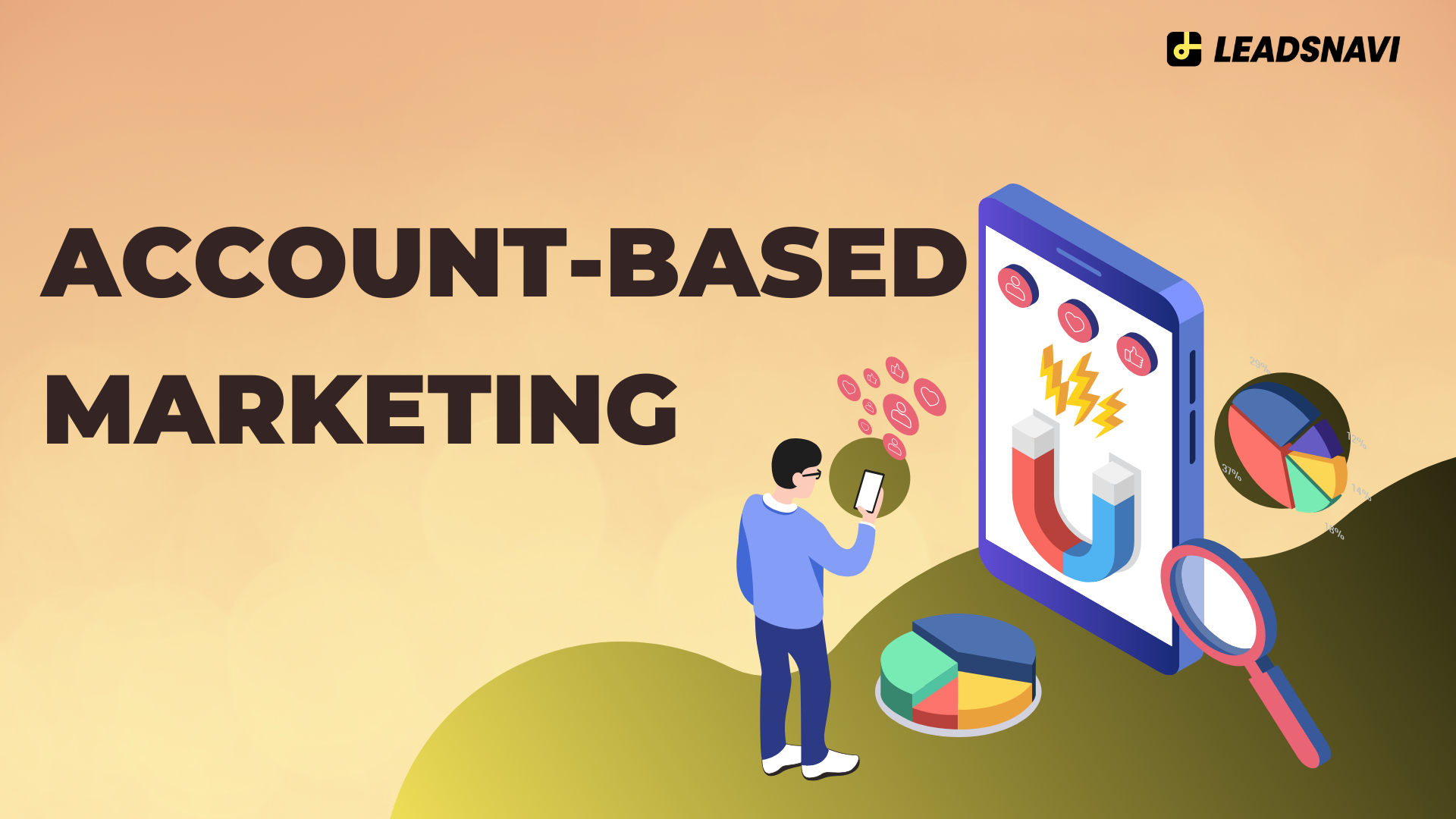What is Account-Based Marketing (ABM)?
Account-Based Marketing (ABM) is a focused growth strategy where marketing and sales teams collaborate to target specific high-value accounts with personalized campaigns. Unlike traditional marketing, which often casts a wide net, ABM prioritizes quality over quantity by concentrating on accounts that offer the highest revenue potential.
ABM is built on four key components:
- Identifying high-value accounts through firmographic and intent data.
- Creating personalized outreach and content tailored to the needs of key decision-makers.
- Engaging through multi-channel strategies like email, LinkedIn, ads, and direct outreach.
- Measuring and optimizing performance based on real-time data and insights.
Introduction: Why Account-Based Marketing is Essential for B2B Success
In today’s competitive B2B landscape, traditional marketing methods often fall short when targeting high-value accounts. Generic campaigns fail to resonate with key decision-makers, leading to wasted resources and low conversion rates. This is where Account-Based Marketing (ABM) comes into play.
ABM allows businesses to create hyper-personalized campaigns aimed at specific accounts, ensuring higher engagement and better results. Key benefits of ABM include:
- Increased ROI by focusing on accounts with the highest revenue potential.
- Stronger engagement with tailored messaging for key stakeholders.
- Alignment between sales and marketing teams for more efficient collaboration.
This blog outlines 7 essential ABM tactics that will help your business succeed, drive better results, and strengthen relationships with your most valuable accounts.
7 Essential Tactics for a Successful ABM Strategy
1. Build a Strategic Target Account List
The foundation of a successful ABM strategy begins with building a strategic target account list. Identifying the right accounts ensures that your marketing efforts are directed at businesses with the highest growth potential.
To create your list:
- Use firmographic data to identify companies that match your ideal customer profile (ICP).
- Leverage intent data to find accounts actively searching for solutions like yours.
- Analyze historical sales data to identify high-value opportunities.
Tools to Use: Platforms like LeadsNavi can accurately identify website visitors, provide detailed company and contact insights, and ensure that no high-value account goes unnoticed.
2. Develop Personalized Content for Target Accounts
Personalized content is a cornerstone of ABM. High-value accounts expect tailored solutions that address their specific challenges, and generic messaging will fail to capture their attention.
Examples of personalized content include:
- Customized case studies relevant to the account’s industry.
- Personalized email campaigns with unique messaging for decision-makers.
- Account-specific videos, reports, or whitepapers showcasing tailored solutions.
3. Align Marketing and Sales Teams
For ABM to be successful, marketing and sales teams must be in sync. Alignment ensures a consistent approach to targeting, engaging, and converting key accounts.
Steps to align teams:
- Define shared goals: Both teams should agree on revenue targets and KPIs.
- Collaborate on account insights: Share data and insights to identify opportunities.
- Create a joint outreach strategy: Sales and marketing should collaborate on messaging and touchpoints.
4. Leverage Multi-Channel Engagement
Engaging target accounts across multiple channels is critical for success. Decision-makers are often busy, so reaching them on the right platform at the right time increases your chances of capturing their attention.
Effective ABM channels include:
- Email campaigns with tailored messaging for each account.
- LinkedIn outreach for personalized social engagement.
- Account-specific landing pages for delivering unique solutions.
- Retargeted ads to maintain visibility and engagement.
5. Optimize Account-Based Advertising
Targeted advertising is a powerful way to boost awareness and engagement with high-value accounts. Account-based advertising focuses on delivering ads specifically to key accounts, ensuring that your marketing spend is not wasted on unqualified leads.
Effective strategies include:
- IP-based targeting to display ads directly to companies on your target list.
- Retargeting campaigns to re-engage decision-makers who have interacted with your content.
- Platform-specific ads on LinkedIn or Google that cater to account priorities.
Tools to Use: Platforms like LeadsNavi provide IP recognition capabilities, helping you optimize ad delivery and maximize your reach with the right accounts.
6. Use Data and Insights to Refine ABM Efforts
Data-driven decisions are critical for optimizing your ABM campaigns. By analyzing the performance of your initiatives, you can identify what’s working, refine your approach, and improve results over time.
Key ABM metrics to track include:
- Account engagement levels (clicks, responses, downloads).
- Pipeline influence and revenue generated from targeted accounts.
- Conversion rates to measure ROI.
Tools to Use: Platforms like LeadsNavi provide real-time data on account activity, enabling you to measure performance and refine your ABM strategy for maximum impact.
7. Focus on Relationship Building and Retention
The ultimate goal of ABM is not just to acquire high-value accounts but to retain and grow them. Long-term relationships with key accounts drive recurring revenue and opportunities for upselling or cross-selling.
Strategies for building relationships:
- Maintain ongoing communication to provide value even after the sale.
- Offer additional resources, tools, or insights tailored to their evolving needs.
- Implement account success strategies to ensure satisfaction and loyalty.
By continuously delivering value, businesses can strengthen relationships, increase customer lifetime value, and ensure long-term success.
Conclusion: Elevate Your ABM Strategy for Long-Term Success
Account-Based Marketing is a game-changing approach for B2B businesses looking to target and engage high-value accounts. By implementing these 7 essential tactics – from building a strategic target list to leveraging multi-channel engagement and optimizing ads – you can create personalized campaigns that drive better results and stronger relationships.
To supercharge your ABM strategy, tools like LeadsNavi offer advanced IP tracking, detailed company insights, and actionable data that help you identify, engage, and convert key accounts more effectively.
Start implementing these tactics today to elevate your ABM efforts and achieve long-term growth!
